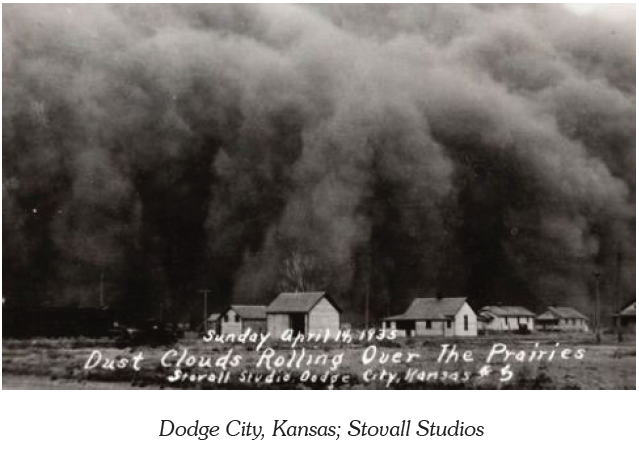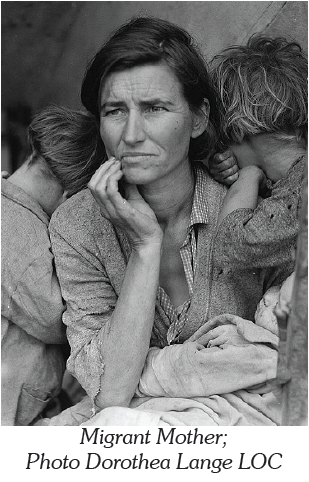From Boom to Dust
Students will learn how the events of World War I helped spark the Great Depression, the Dust Bowl, and the resulting New Deal by watching a video and participating in a round robin, responding in writing to images and sound bites from the Dust Bowl, and observing a wind erosion demonstration.Grades 9-12
Background
Lesson Activities
Recommended Companion Resources
Credits
Author
Debra Spielmaker | Utah Agriculture in the Classroom
Standards
Indiana Content Area Standards
-
English Language Arts.Grade 9-10.SL.1
Listen actively and adjust the use of spoken language (e.g., conventions, style, vocabulary) to communicate effectively with a variety of audiences and for different purposes.
- Comprehension.9-10.SL.3.1: Analyze multiple sources of information presented in diverse media and formats while evaluating the credibility and accuracy of each source.
- Discussion and Collaboration.9-10.SL.2.1: Initiate and participate effectively in a range of collaborative discussions on grade-appropriate topics, texts, and issues, building on others ideas and expressing personal ideas clearly and persuasively.
-
English Language Arts.Grade 11-12.SL.1
Listen actively and adjust the use of spoken language (e.g., conventions, style, vocabulary) to communicate effectively with a variety of audiences and for different purposes.
- Comprehension.11-12.SL.3.1: Synthesize multiple sources of information presented in diverse media and formats in order to make informed decisions and solve problems, evaluating the credibility and accuracy of each source and accounting for any discrepancies among the data.
- Discussion and Collaboration.11-12.SL.2.1: Initiate and engage in a range of collaborative discussions on grade-appropriate topics, texts, and issues, building on others ideas and expressing personal ideas clearly and persuasively.
-
United States History: Emergence of the Modern United States: 1897 to 1920: Standard 3
Students examine the political, economic, social, and cultural development of the United States during the period from 1897 to 1920.
- USH.4.7 Emergence of the Modern United States: 1897 to 1920: Assess the economic impact of the Great Depression on all Americans.
-
United States History: Modern United States in Prosperity and Depression: 1920’s and 1930’s: Standard 4
Students examine the political, economic, social, and cultural development of the United States during the period from 1920 to 1939.
- USH.4.4 Modern United States in Prosperity and Depression: 1920s and 1930s: Identify technological developments during the 1920s and explain their impact on rural and urban Americans.
- USH.4.8 Modern United States in Prosperity and Depression: 1920s and 1930s: Analyze the strengths and weaknesses of the First New Deal, including the Works Progress Administration and the National Recovery Act.
-
United States History: Historical Thinking: Standard 10
Students conduct historical research that incorporates information literacy skills such as forming appropriate research questions, evaluating information by determining its accuracy, relevance and comprehensiveness, interpreting a variety of primary and secondary sources, and presenting their findings with documentation.
- USH.10.3 Historical Thinking: Analyze multiple, unexpected, and complex causes and effects of events in the past.

